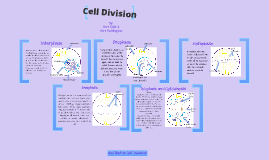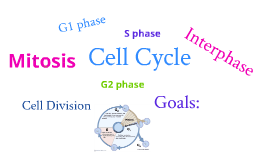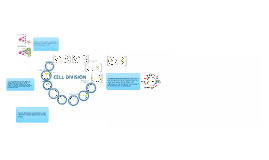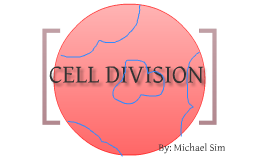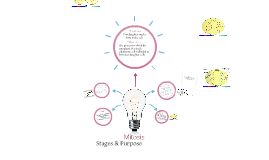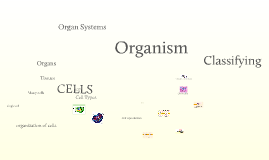Cell Division
Transcript: Cell Division And That Is Cell Division! Interphase Nucleolus Telophase: Roughly the reverse of prophase. The cell elongation that started in anaphase continues. Daughter nuclei appear at the two poles of the cell as nuclear envelopes form around the chromosomes. Meanwhile, the chromatin fiber of each chromosome uncoils, and nucleoli reappear. At the end of telophase, the mitotic spindle disappears. Mitosis is now finished. Cytokinesis: Cytokinesis, the division of the cytoplasm, usually occurs along with telophase, with two daughter cells completely separating after the end of mitosis. In animal cells, cytokinese involves a cleavage furrow, which pinches the cells in two. Nuclear Envelope Prophase Metaphase centrosome cleavage furrow By: Sara Ellis & Sara Buffington During prophase, changes occur in both the nucleus and the cytoplasm. In the nucleus the chromatin fibers become more tightly coiled and folded. The nucleoli disappear and each duplicated chromosome appears as two identical sister chromatids joined together. Anaphase This begins when the two centromeres of each chromosome come apart, separating the sister chromatids. Once apart each sister chromatid is considered a full-fledged (daughter) chromosome. Motor proteins 'walk' the daughter chromosomes along the microtubules toward opposite poles of the cell. The poles are moved farther apart, elongating the cell. Aanaphase is over when equivalent- and complete- collections of chromosomes have reached the two poles of the cell. spindle microtubules centromere Plasma Membrane In metaphase, the mitotic spindle is fully formed with its poles at opposite ends of the cell. The chromosomes convene on the metaphase plate. The microtubules attach to a particular chromatid. centrosomes Telophase and Cytokinesis early mitotic spindle This is the period of cell growth when the cell synthesizes new molecules and organelles. The cell looks much the same as it does through interphase. By the G2 phase the cell has doubled much of its earlier contents and the cytoplasm contains two centrosomes. Chromosomes are duplicated but are still in the form of loosely packed chromatin. nucleolus forming nuclear envelope forming daughter chromosomes meataphase plate chromosome (containing of two sister chromatids) Chromatin






